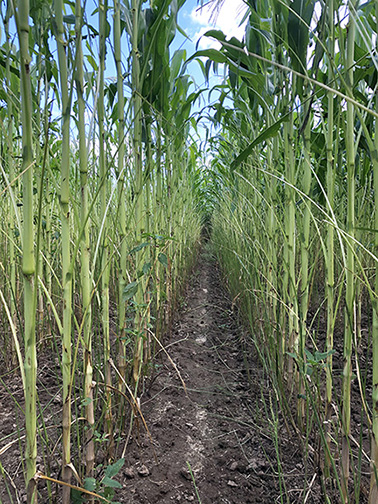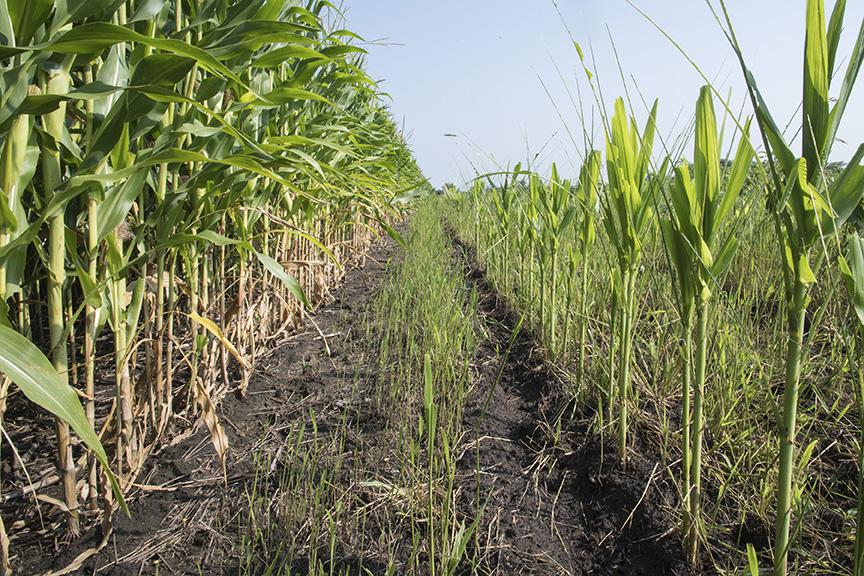There have been multiple enquiries over the last week concerning corn leaves and forage grasses disappearing! Areas of fields just completely denuded. Specialty and yellow dent non-Bt corn, as well as, many species of forage grasses were on the menu! Those inspecting the damaged areas found mostly frass (insect poop) all over the ground. In all situations, the damage was found too late for treatment considerations, as the few remaining true armyworm (Pseudaletia unipuncta) found were mature and soon to pupate.
Damage from armyworm late in the season is unusual, as we think of this pest only occurring in the spring. Normally, parasitic wasps/flies and disease pathogens, keep this pest from building up populations once temperatures and humidity rise. As we have heard many times this season from folks, “this is a strange year.”
The next generation of emerging armyworm moths, along with a similar species, the fall armyworm (Spodoptera frugiperda), from the Gulf States, will be looking for lush, green vegetation late this summer/early fall…think newly planted forages or cover crops. This might be the year to give these crops special attention once they are up and established. Happy scouting!




